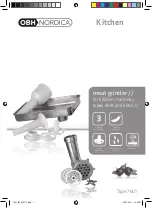
Object recognition sensor
O2D54x O2D55x
9
Image captures for object or contour detection are triggered by an internal or external trigger signal.
Depending on the selected trigger mode, the images are then captured accordingly.
•
Internal triggering
– Images are captured continuously with a fixed frame rate.
– The settings are made via the ifm Vision Assistant software.
•
External triggering
– Image capture activated by external trigger source (switching signal of a connected sensor) via
the trigger input.
– Image capture activated by process interface command (PLC) via Ethernet.
If an internal or external illumination unit is used, it will be switched on with each triggering.
4.3.1 External triggering
For external triggering of image captures, different trigger modes can be used (
Ò
software manual at
):
•
Negative edge
•
Positive edge
•
Negative and positive edge
•
Gated trigger
•
Burst trigger
During an active trigger process, no new trigger can be activated. A trigger signal that occurs
too early will be discarded and treated as a “Trigger overrun” error. The ready signal “Ready for
trigger” can be output to a switching output.
Trigger
input
Ready
1
t
t
A
t
A
0
1
0
Fig. 1: Ready signal (“Ready for trigger”)
Example: A diffuse reflection sensor as an external
trigger source triggers the unit on a positive edge (t
A
= evaluation time).
4.3.2 Internal debouncing
2
1
0
2
4
6
8 10 12 14 16 18 20
t [ms]
Fig. 2: Internal debouncing
1:
trigger input
2:
image capture
The trigger input can be debounced internally
(preset: internal debouncing deactivated). Internal
debouncing prevents several short pulses from
triggering. The pulse must be at least 4 ms long to
be recognised as a trigger.
Depending on the electrical installation, debouncing
is not necessary.
A trigger delay can be set.










































